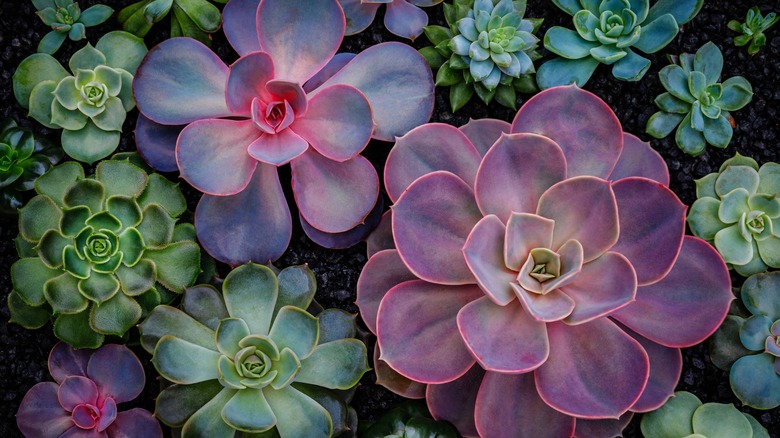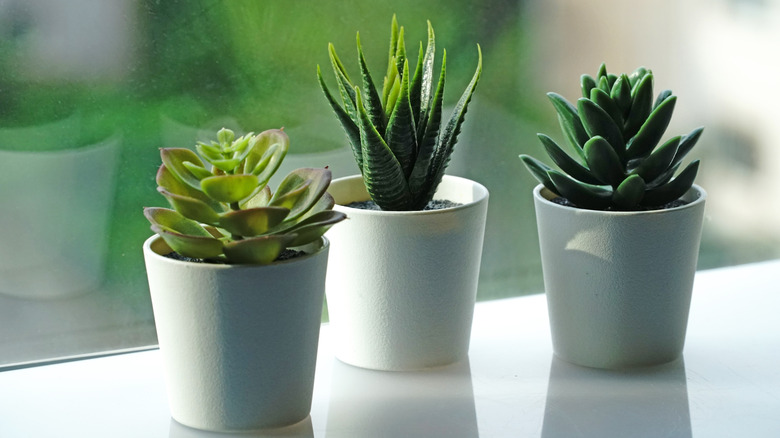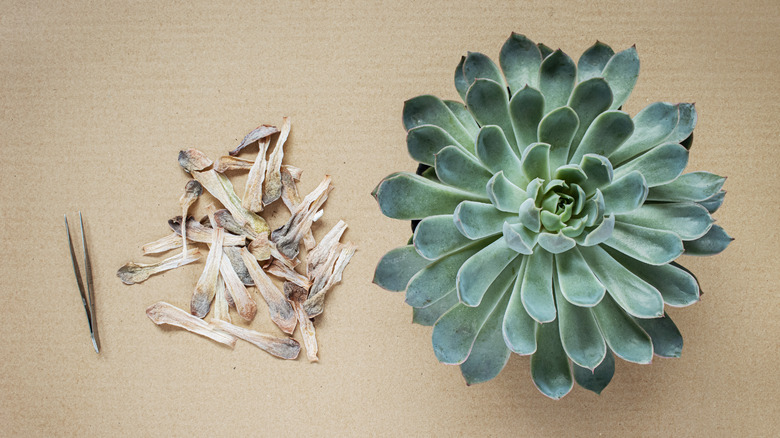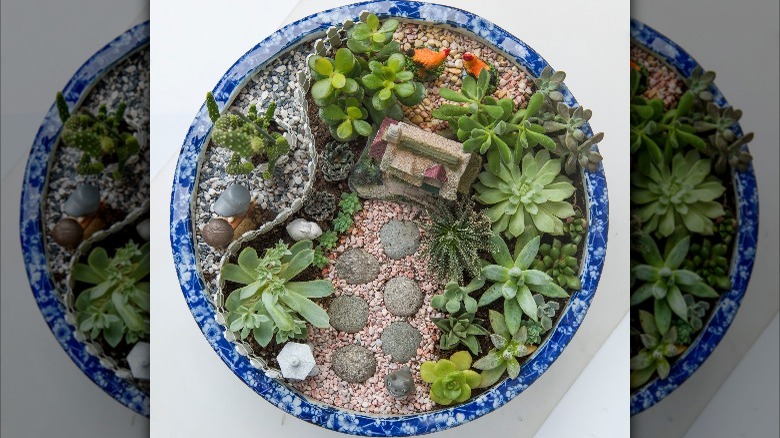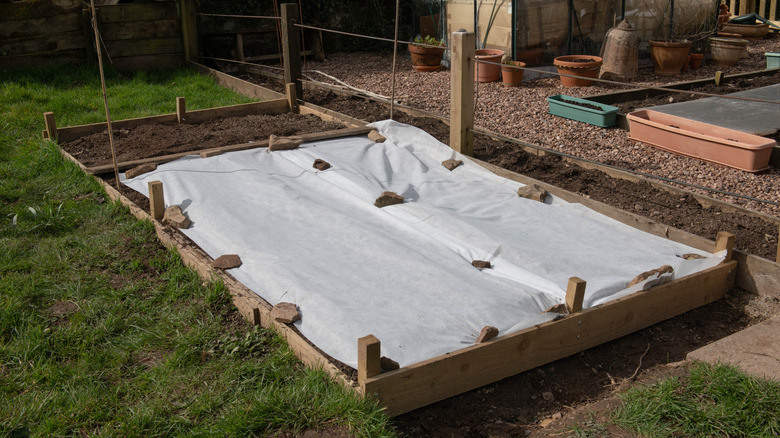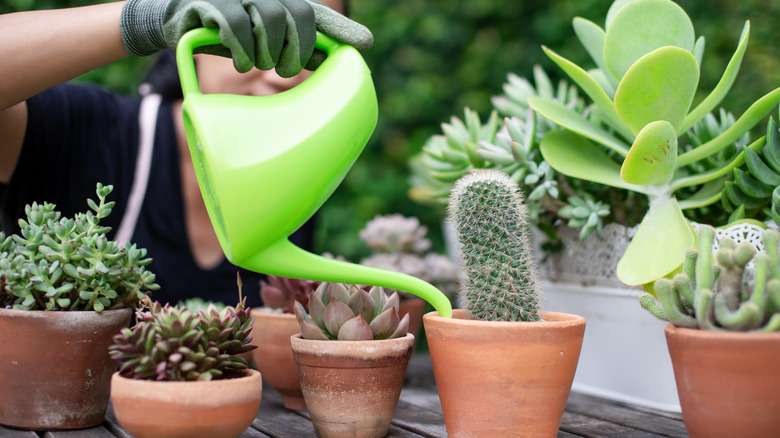5 Tips To Help You Care For Your Succulents This Winter
During the winter, plants typically need extra love and care, whether in a pot inside or planted outside. If you have succulents, you'll need to take some precautions to ensure they survive the cold weather. Succulents currently planted outside may need to be transported indoors, though some can survive in cold weather. You'll need to identify if your specific species can be left in harsh conditions.
According to Garden Therapy, Sedum, Sempervivum, Agave, Ice Plant, Lewisa, and Yucca plants should thrive outside, while Aeonium, Echeveria, and Crassula succulents will need to be transported indoors. However, make sure you do your research based on the weather conditions where you live to determine if you can keep your plants outside. In addition to this, there are some more things you can do during the winter months to make sure your plant babies thrive. Below are clever ways to care for your succulents this winter.
1. Move to a warmer spot
If you've discovered that your succulent needs to be brought inside for the winter, this should be done before the first frost, per Succulents and Sunshine. Succulents Box adds that plants that are extra sensitive to the cold may need to be brought in before the temperature drops below 45 degrees Fahrenheit.
Whether you're keeping your succulents outside or caring for them inside, you may want to consider moving them to a warmer location. According to Succulent Plant Care, succulents love sunlight. If they don't have at least four hours of sun a day, their bright color may begin to fade. Outside, this may mean moving them out from underneath porches or other taller plants. If inside the home, Succulents and Sunshine says to put them in your brightest window. If they begin to lean towards the sunlight, you can rotate them to allow every side of the plant to get to bask in the warm light.
2. Remove dead leaves or signs of frostbite
Additionally, succulents should regularly be pruned of dead leaves. Mountain Crest Gardens recommends doing this before cold or wet weather or bringing your plants inside, and this will help them be more resilient to the conditions and diseases. Removing dead leaves will also protect your plants from rot.
Succulents and Sunshine explains what to do if your outdoor succulents experience frostbite. First, identify that it is, in fact, frostbite. If the weather has been colder than usual lately and your plant shows signs of damage or appears black or dark in color, it is most likely frostbite. Once identified, move your plant to a warmer place and let it dry out — do not water the plant immediately. After it has dried out, cut off the affected areas and only begin watering again when the plant appears to be completely dry.
3. Use gravel or pebbles
Gravel or pebbles could be placed either on top of the soil or underneath the roots of a succulent plant. Per Succulent Market, rocks placed beneath roots are called potting pebbles, while those above are called top dressing, per Planet Desert. In addition to gravel and pebbles, moss, crushed glass, granite, or mulch could also be used.
Adding gravel or small rocks around these plants has several benefits, including assisting in drainage and growth. The stones will prevent the plant from sitting in large amounts of water, which succulents do not enjoy. Additionally, for those outside, Gravel Master says that gravel, mulch, or pebbles will provide insulation and heat, which could help prevent frostbite. And it will keep the plant from touching the ground, enabling it to avoid infection or rot. If you use mulch, this organic material will also break down and provide nutrients.
4. Wrap in fleece
Plants kept outside may need to be wrapped in horticultural fleece. According to Garden Lovers Club, this material is sometimes called garden fleece. Surreal Succulents adds that there are different kinds — some are meant for a lighter frost while others are more heavy duty. What type you choose will depend on your typical weather conditions. Both types are open weaves, meaning they still allow sunlight and air to reach the plant.
Because this material is lightweight, it can be placed right over the top of your succulents, per Garden Lovers Club. This material keeps plants warm by trapping in the heat that radiates from the ground, per Surreal Succulents. And it also protects plants from harsh weather, excessive moisture, and pests. To keep the fleece from blowing away, you could surround the border of your plant or garden with rocks or stakes.
5. Don't overwater
This tip is essential year-round but may be especially true during the winter: Make sure you don't overwater your succulents. Because these plants are drought tolerant, they must go through dry periods to thrive; it also helps that they dislike excessive water. Succulents and Sunshine say that those inside should be placed in a pot with a drainage hole so that their roots don't sit in water.
They also say that it is crucial to know if the succulent you have goes dormant or continues to grow in the winter. If it goes dormant, it shouldn't need to be watered at all during the winter months. It will require some water if it continues to grow, but only when the soil is arid. Platt Hill Nursery says that watering once every two weeks is usually enough for succulents. Those outside may not need to be watered during winter because they are exposed to more moisture.
